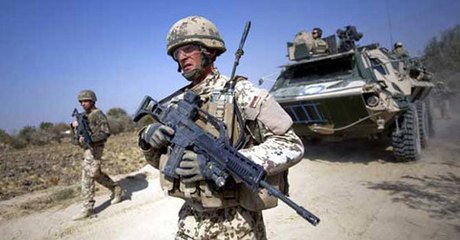Seven NATO Countries Hit Spending Target
إقرأ هذا الخبر بالعربية
Seven of the 29 NATO countries hit the alliance's defense spending target in 2018, figures showed Thursday, an improvement over the year but probably not enough to satisfy Donald Trump.
The U.S. president has repeatedly railed against European alliance members for not spending enough on their own defense, accusing them of freeloading on U.S. military might.
NATO's 2018 annual report showed sharp rises in defense spending, notably in the Baltic states and the Netherlands but economic giant Germany still lags.
Apart from the U.S., six members hit the target of spending two percent of GDP on defense in 2018: Britain, Estonia, Greece, Latvia, Lithuania and Poland.
Though NATO countries have only promised to try to hit two percent by 2024, the failure of many to even get close to that has infuriated Trump, who has reportedly threatened to pull out of the alliance if the European allies does not boost spending immediately.
Germany, Europe's economic powerhouse, has come in for particular criticism and once again it fell well short of the target.
While German defense spending went up from $45 billion to $50 billion, the country's growing economy meant the figure relative to its GDP stayed flat at 1.23 percent.
NATO Secretary General Jens Stoltenberg welcomed Berlin's moves to increase its budget but insisted it must redouble its efforts.
"Germany has after years of cutting defense spending started to increase, and actually added a significant amount of money to the defense budgets," Stoltenberg told reporters.
"But I expect more. I expect further increases and Germany has made it clear they plan to further increase defense spending."
- Trump outbursts -
Trump's regular outbursts about European defense expenditure have caused some to question the future of the alliance, which celebrates its 70th anniversary this year.
After the end of the Cold War military budgets in Europe steadily dwindled, but Russia's annexation of Crimea and growing assertiveness have made defense a priority once more.
Stoltenberg insisted in January that pressure from Trump had led to allies spending more.
The former Norwegian prime minister regularly points out that overall NATO defense spending is rising and that, by the end of 2020, allies will have added $100 billion since Trump took office in 2016.
"We face a paradox: At a time when some are questioning the strength of the transatlantic bond, we are actually doing more and in more places than ever before," he said on Thursday.
U.S. military spending dwarfs that of the rest of the alliance. In 2018 Washington spent nearly $700 billion on defense, compared with just $280 billion for all the European NATO allies combined.
Last month a report by the International Institute for Strategic Studies (IISS) showed that NATO's 27 European countries fell short of the two percent target by $102 billion in 2018.
The IISS said European NATO members would "collectively have had to increase their spending by 38 percent" to hit the two percent target in 2018.
NATO officials expected seven European member states to hit the target in 2018 but Romania fell just short on 1.92 percent because its economy grew faster than expected.
Stoltenberg confirmed on Thursday that he would accept an invitation to address a joint meeting of the U.S. Congress in early April as part of NATO's 70th birthday celebrations.
NATO officials say it will be the first time an alliance secretary general has addressed both houses of Congress.



